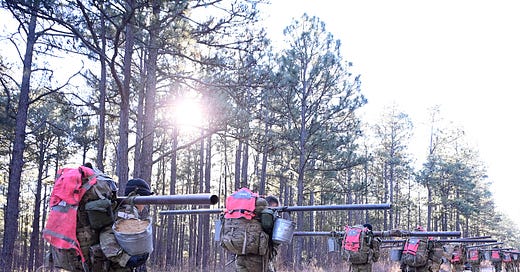Two new jobs, but too few people (and robots)
The Green Berets try to adapt to the new way of war
Army special operations leaders are pushing for two new jobs in Special Forces formations: one to call in artillery and air strikes and another to handle robotics and other automated systems. There are just two problems: They are critically short of both people and robots.
Meanwhile, the combination of budgetary pressures, recruiting shortfalls and lessons learned from the wars in Ukraine and the Middle East is forcing those leaders to make “hard choices” that may involve reducing freefall training slots and eliminating courses at the community’s schoolhouse, according to Maj. Gen. Jason Slider, commander of the John F. Kennedy Special Warfare Center and School at Fort Liberty, North Carolina. (The center is known within the special operations community as “SWCS,” pronounced “swick.”)
Slider was speaking at an Oct. 15 panel discussion in Washington hosted by the Green Beret Foundation. The panel also featured CSM Lionel “Lee” Strong, the center’s senior enlisted leader, and Maj. Gen. Gil Ferguson, commander of 1st Special Forces Command (Airborne). Slider and Strong then elaborated on the topics raised in the discussion during an interview with The High Side later that day.
Slider, whose special operations background is in Civil Affairs, made it clear during the panel discussion that he was not underestimating the seriousness of the recruiting problem. “It’s actually an existential threat to 1st Special Forces Command,” he said. (That command oversees all seven Special Forces groups plus Civil Affairs and Psychological Operations units.) “For a number of years, we’ve not recruited the numbers of soldiers that we needed, we’ve not produced the number of soldiers that we needed.”





